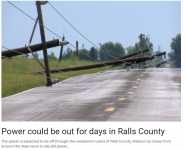Again you aren’t going to be feeding double wide trailers from an RMU as your POD. In terms of total line length, poles, etc., 90% or more of any POCO are radials. All those small 130 V residential transformers and their associated radials vastly exceed the distribution system feeding them.
I’m not denigrating network or at least looped distribution lines. And obviously radial distribution has the possibility of affecting large numbers of customers. What I’m pointing out is the large number of customers that have to be addressed one by one after storm damage.
Basically I have 3 MV schemes pictured.
1. Is a 5 feeder spot network system capable of operating under N-2. Each spot network has 5 transformers with the secondaries paralleled into a collector bus- 120/208, 240/416 and 277/480 would radiate out, fused or with limiters. The trafos can either be in an above ground structure or in an underground vault. The MV is segmented into sections with switches (midpoint switches normally open) so either manual or automatic forced load transfer to other subs can take place for extreme contingencies.
2. A 300-400 amp parallel normally open loop with breakers and sensationalizing switches. The breaker or motorized switch are in a kiosk or pad style station feeding a single trafo that can be anywhere from 30 to 1000kva in size. The LV radiates out to customers. A loop scheme type approach is used where breakers open for a fault, switches sub sectionalize around the fault cable during the dead time, and then a normally open breaker closes back in to pickup the healthy segments. No customers are lost for a single feeder fault.
3. A 600 amp trunk line that daisy chains through PME padmount gear with 200E fuses protecting 200 amp sub loops. The 600 amp switches may or may not be automatic, though preferably automatic as part of a loop or source transfer (dual source). The 200 amp sub loops daisy chain through an unlimited number of padmounts, single phase or 3 phase. A fault on the sub loop blows a PME fuse, however, line crews can located the fault cable, and manually switch it out via loop switches in each padmount restoring service while the cable can be thumped and repaired.
These are the onl6 3 approaches coming to mind that balance cost and reliability.

